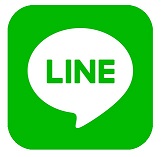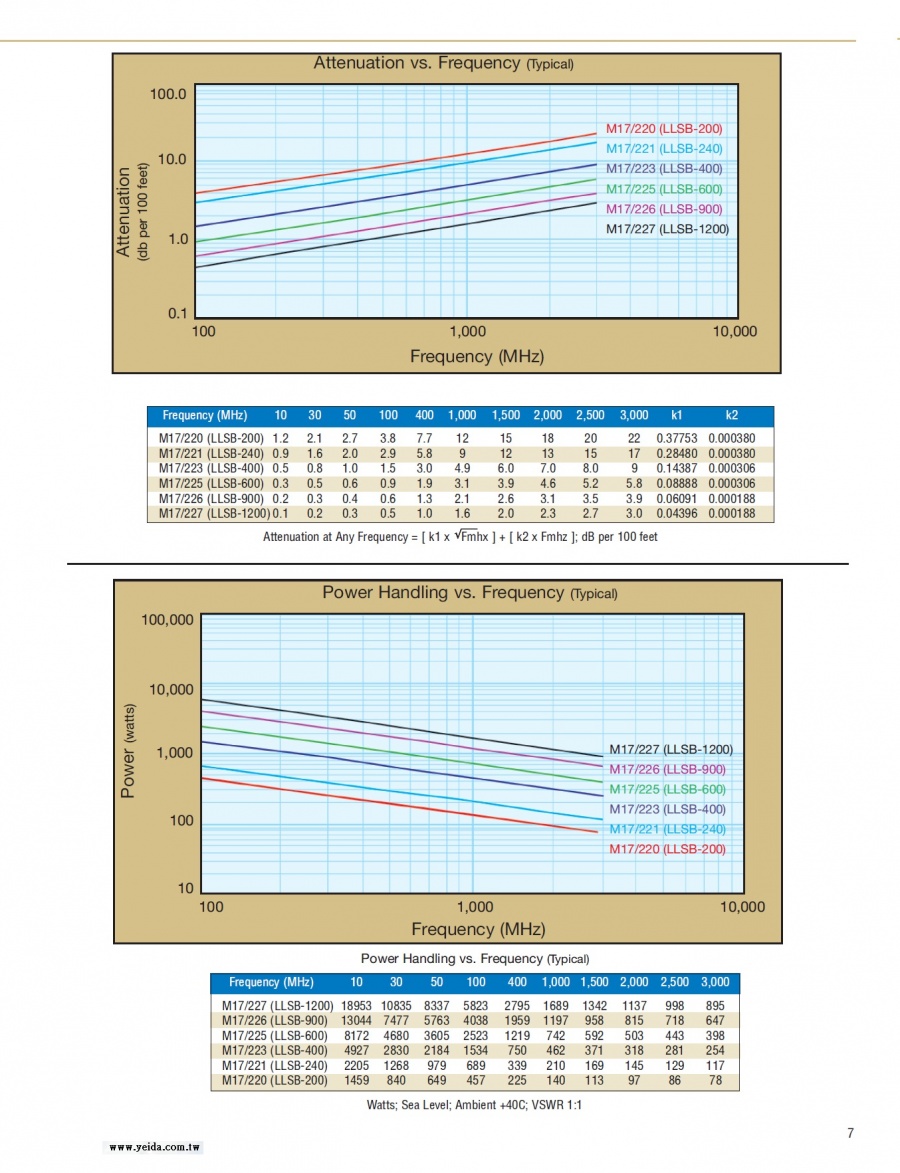LLSB® Low Loss Military/Shipboard Coax
MIL-C-17 Qualified
• Low Loss Air Frame, Shipboard,
Ground (Tactical) Interconnect
• Fire Retardant / Low Smoke (non-halogen)
• Flexible For Easy Deployment / Routing
See page 9 for materials abbreviations.
Features & Benefits
• Lower Loss
• Superior Shielding
Effectiveness
• Fire Retardant (non-halogen)
• Light Weight
• Flexible for Ease of Deployment
• Excellent Connector Selection
• Flexible: With very tight minimum bend radius, LLSB
cable can be easily routed into and through tight spaces without
kinking. The bonded-tape outer conductor provides
superior flexibility and ease of bending compared to previous
generation M17/RG type, corrugated copper, or smooth
wall copper hard-line cables.
• Low Loss: LLSB has lower loss than other cables of the
same size. This is achieved through the use of a high velocity
dielectric and bonded aluminum tape outer conductor.
The proprietary gas-injected closed cell foam dielectric prevents
water migration through the cable and provides excellent
crush resistance.
• Fire Retardant: A black UV resistant non-halogen, low
smoke - fire retardant, cross-linked polyethylene jacket
makes the cable rugged and resistant to the full range of military/
defense environments. LLSB easily achieves FAR 25,
NES-711, NES-713 compliance.
• RF Shielding: The bonded aluminum tape outer
conductor is overlapped to provide 100% coverage, resulting
in >90 dB RF shielding (>180 dB crosstalk) and excellent
interference immunity (ingress and egress).
• Phase Stability: The intimately bonded structure and
foam dielectric of LLSB cables provide excellent phase stability
over temperature and with bending. The high velocity
dielectric results in superior phase stability as compared with
solid and air-spaced dielectric cables.
• Connectors and Assemblies: A full range of
connector interfaces is available in crimp or clamp styles in
addition to supporting installation tools. Custom preterminated
and tested assemblies with phase matching, insertion
loss matching, and other special electrical or marking requirements
can also be provided.
• Reference: See page 9 for complete listing of
qualified M17/220-/229 constructions.
Low-Smoke, Non-Halogen Coaxial Cables
Military Shipboard Qualifications
Military Shipboard Qualifications
Since the 1940s, MIL-C-17 has been the definitive specification for coaxial, triaxial and other high performance
radio frequency cables. Beginning in 1970, United States standards making organizations have been establishing safety requirements
for product flame retardance, and more recently, smoke, toxicity and corrosive off-gassing properties. With revision "G", MIL-C-17
adapts qualification tests for each of these characteristics, which assures the coaxial cable you select for your applications will meet
the minimum safety standards.
In 1993, per MIL-STD-454, the military began the process of inactivating the use of polyvinylchloride (PVC) radio frequency
cables, that were used in military weapons systems. A new series of cross-linked, low-smoke, non-halogen coaxial cables were qualified
to replace the older inactivated PVC versions.
Many of the requirements existent in the MIL-C-24640 and MIL-C-24643 multi-conductor, low-smoke shipboard cables specifications
were incorporated into revision "G" of MIL-C-17. Table I describes some of these added
requirements as well as typical testing results.
In addition to the products of combustion requirements, these cross-linked, low-smoke designs offer higher levels of abrasion
and fluid resistance, that are commonly required in many of todays naval shipboard environments.
Low-Smoke, Non-Halogen Coaxial Cables
Attenuation and Structural Return Loss
MIL-C-17 specifications require that attenuation and structural
return loss (VSWR) be completely tested by sweeping 22
different 50 ohm cables over the frequency band for which their
use is recommended. Variance in materials or in the manufacturing
process can cause periodic discontinuities along a length
of coaxial cable, which can introduce resonance peaks (spikes).
These spikes occur when the discontinuities or changes in
electrical characteristics are periodic and at half-wave
distances.
When impedance changes occur periodically, there are frequencies
in which all of the reflections are in phase, resulting in
a large reflected signal or VSWR of the cables and their connectors.
Periodic reflections can also cause substantial increase
in attenuation at the resonance peaks. In the past, it was very
unusual to detect these narrow band, high attenuation spikes,
when cables were tested for attenuation using the older MIL-C-
17D discrete frequency test procedure (generally at 400 MHz
and 3 GHz and also at 10 GHz for RG-214).
Now, however, M17/190-RG214 has continuous swept maximum
VSWR and attenuation requirements from 50 MHz to 11
GHz. The maximum VSWR is 1.15:1 (23 dB SRL) at 100 MHz
increasing to 60 dB/100 feet at 11 GHz.
Coaxial cables that do not require "full band" swept frequency
performance can be procured under separate part numbers
in an unswept version. The specifications sheets for these
unswept cables recommend that they not be used above 400
MHz. The user must decide which cables will best suit the situation
based on cost, application and potential for system growth
and improvement.
MIL-C-17 QPL Listing
Only qualified cables should be used for military contracts.
All manufacturers of MIL-C-17 cables must obtain qualification
approval for their cables. The qualified products are then listed
in QPL-17, which is updated periodically throughout the year.
Please note that all RG numbered cables have been cancelled
from MIL-C-17 and only cables with part numbers starting
"MIL/17" should be used for new military contracts. Since
Qualification Inspections MIL-C-17 Requirements Typical MIL-C-17(G)
Critical to MIL-C-17(G) Inspection Results
Flame Propagation (IEEE-383) 8 Foot Maximum Burn Pass
Acid Gas Generation 2.0 Maximum 0.20
Halogen Content .20 Maximum 0.06%
Smoke Index (NES 711) 25.0 Maximum 11.4
Toxicity Index (NES 713) 5.0 Maximum < 2.2
Weathering 75% Minimum Retention Pass
Abrasion Resistance 75 Cycles Minimum 175 Cycles
Tensile Strength 1300 psi Minimum 1800 psi
Elongation 160% Minimum 200%
Fluid Resistance 50% Minimum Retention Pass
Heat Distortion 30%Maximum 10%
there is no longer any control of "RG" specifications, many cables
on the market with RG designations may be completely different in
construction and performance.
Special Designs
Although MIL-C-17 covers a broad range of cable types, Times
can also provide technical assistance in designing specialized shipboard
cables to meet specific system parameters that cannot be met
with existing MIL-C-17 cables. Please contact our Engineering
Department for assistance with your specialized applications.
keyword: TIMES, LLSB, Military,Shipboard Coax, MIL-C-17, MIL-C-24640,MIL24643,軍規船艦等柔軟耐燃低煙無鹵低損耗射頻同軸線纜
.jpg)
Times-LLSB

 2024/5/9 上午 08:36:43
2024/5/9 上午 08:36:43










